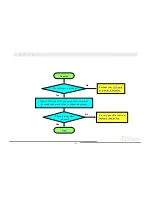
94
A
A
X
X
4
4
T
T
I
I
I
I
-
-
1
1
3
3
3
3
O
O
n
n
l
l
i
i
n
n
e
e
M
M
a
a
n
n
u
u
a
a
l
l
P
P
O
O
S
S
T
T
(
(
P
P
o
o
w
w
e
e
r
r
-
-
O
O
n
n
S
S
e
e
l
l
f
f
T
T
e
e
s
s
t
t
)
)
The BIOS self-test procedure after power-on, sometimes, it is the first or the second screen shown on your monitor during
system boot.
R
R
D
D
R
R
A
A
M
M
(
(
R
R
a
a
m
m
b
b
u
u
s
s
D
D
R
R
A
A
M
M
)
)
Rambus is a memory technology that uses large burst mode data transfer. Theoretically, the data transfer should be high than
SDRAM
. RDRAM is cascaded in channel operation. For Intel 820, only one RDRAM channel is supported, 16-bit data per
channel, and this channel may have maximum 32 RDRAM devices, no matter how many
RIMM
sockets.
R
R
I
I
M
M
M
M
(
(
R
R
a
a
m
m
b
b
u
u
s
s
I
I
n
n
l
l
i
i
n
n
e
e
M
M
e
e
m
m
o
o
r
r
y
y
M
M
o
o
d
d
u
u
l
l
e
e
)
)
184-pin memory module that supports
RDRAM
memory technology. A RIMM memory module may contain up to maximum of 16
RDRAM devices.
S
S
D
D
R
R
A
A
M
M
(
(
S
S
y
y
n
n
c
c
h
h
r
r
o
o
n
n
o
o
u
u
s
s
D
D
R
R
A
A
M
M
)
)
SDRAM is one of the DRAM technologies that allow DRAM to use the same clock as the CPU host bus (
EDO
and FPM are
asynchronous and do not have clock signal). It is similar as
PBSRAM
to use burst mode transfer. SDRAM comes in 64-bit
168-pin
DIMM
and operates at 3.3V. AOpen is the first company to support dual-SDRAM DIMMs onboard (AP5V), from Q1 1996













































